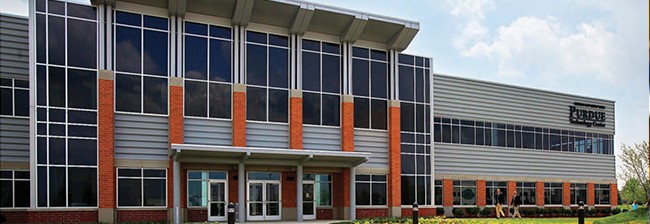Innovation Connector Announces First Associate Director
The Innovation Connector is pleased to announce the promotion of Carter Anderson to Associate Director.



 The program responsible for Certified Technology Parks (CTPs) in Indiana was created as a tool to “support the attraction and growth of high-technology businesses and promote technology transfer opportunities,” according to the Indiana Economic Development Corporation (IEDC).
The program responsible for Certified Technology Parks (CTPs) in Indiana was created as a tool to “support the attraction and growth of high-technology businesses and promote technology transfer opportunities,” according to the Indiana Economic Development Corporation (IEDC).
CTPs are the product of local redevelopment departments, which are established to improve certain – sometimes blighted or underutilized – areas of the community. The redevelopment commission, which governs the department, applies to the IEDC seeking a CTP designation for all or part of the territory within its jurisdiction.
Designation as a CTP allows for the local recapture of certain state and local tax revenue which can be invested in the development of the park. Specifically, CTPs may capture a maximum of $5 million over the life of the park in incremental sales and income taxes. Those that hit their lifetime cap are eligible to capture an additional $100,000 annually in incremental income tax revenue as long as it maintains its certification with the IEDC.
Another distinction is that CTPs are anchored by at least one business engaged in “high-technology activity” that will create a significant number of jobs. This includes, for example, advanced computing, biotechnology, medical device technology and advanced vehicle technology, among others. (See IC 36-7-32-7)
This year, Senate Bill 213 seeks to increase the annual post-cap capture to $250,000 for CTPs by addressing a concern (one that has been the death knell for similar attempts in previous sessions) raised by members of the House of Representatives: What happens when a CTP evolves into a general business incubator rather than a hotbed for high-tech innovation?
Admittedly, this happens. CTPs, through their own success, cultivate high-technology businesses to the point they “graduate” from the CTP and move into another, larger space in the community. In need of backfilling the empty CTP space, they negotiate a lease – sometimes with a new, albeit non-high-tech tenant. After five to 10 years, the CTP may no longer have an anchoring business engaged in “high-technology activity.”
In short, SB 213 says that (i) once the CTP reaches the $5 million lifetime cap, it must be recertified by the IEDC, (ii) the IEDC evaluates the CTP to determine if it still meets the statutory requirements for CTP designation, (iii) if so, then the CTP will be considered a “Level 2 CTP” and eligible for the additional recapture; if not, then it is designated a “Level 1 CTP,” which means that it may maintain the CTP label but must come into compliance with the statute before being eligible for the additional recapture and/or risks losing the CTP label all together.
We are hopeful that these changes to the statute will resonate with the decision-makers in the Indiana House, specifically those on the Ways and Means Committee who must agree to hear the bill. CTPs are a success story in Indiana that have bolstered communities throughout the state and cultivate a spirit of STEM entrepreneurship.
But they have a unique business model: a successful CTP risks losing high-paying tenants and therefore revenue. As such, time has come to support these hubs of high-tech innovation by rewarding those CTPs that the IEDC determines are “good actors” – especially as most, if not all, CTPs are near the $5 million cap and will struggle to exist without additional state support.
Adam H. Berry | aberry@indianachamber.com | (317) 264-6892
This story was originally posted on www.indianachamber.com